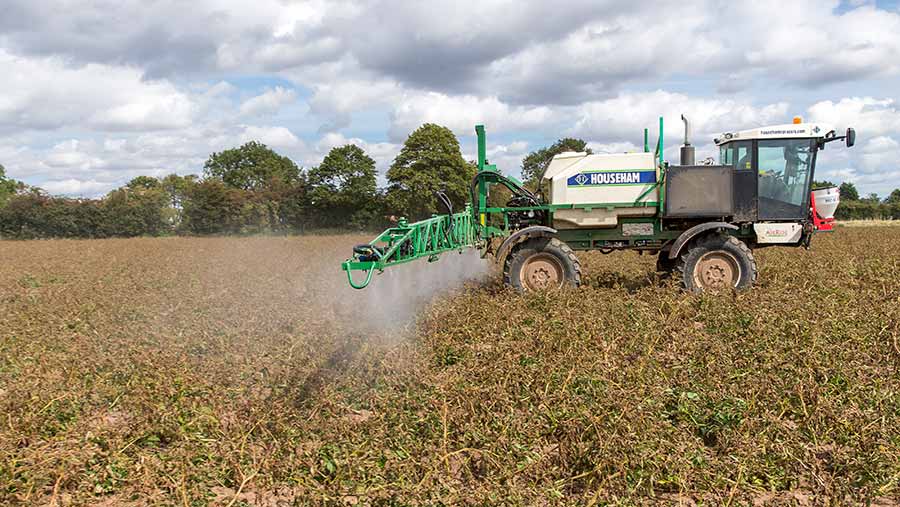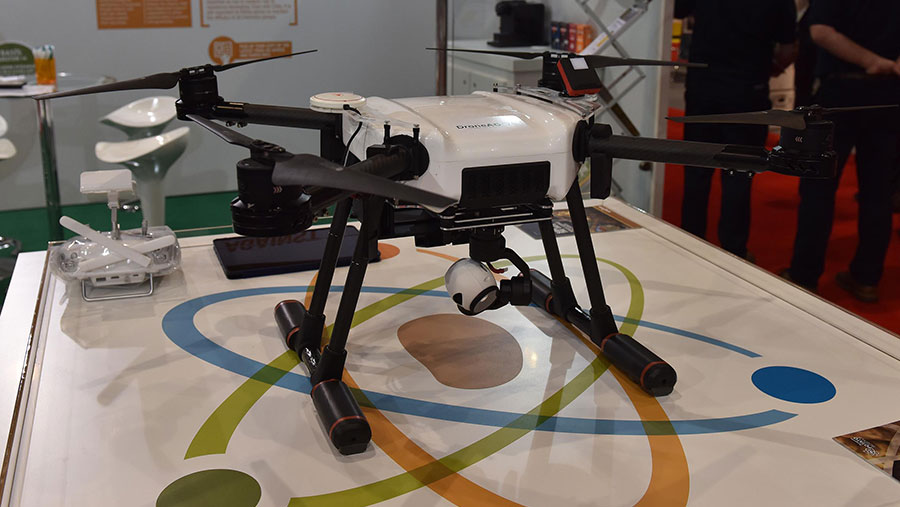New nozzle advice for desiccating potatoes with Reglone
 © Gary Naylor
© Gary Naylor Using 90% drift-reduction nozzles when applying diquat to burn down potato crops before lifting offers farmers greater flexibility with a wider spraying window.
Advice for sprayer operators applying Reglone (diquat) now includes the use of coarse droplet nozzles, following trials showing their use has no adverse effect on desiccation efficacy.
Reglone is a key contact herbicide which relies on good canopy coverage for maximum efficacy, said Syngenta application specialist James Thomas.
See also: Drip irrigating potatoes promises more crop per drop
Following the success of the 90% reduction nozzles for reducing drift when applying pre-emergence herbicides last season, he investigated whether they would also work with diquat.
The drift-reduction nozzles result in coarser droplets than the recommended potato nozzle and one concern was this would reduce plant coverage, thereby, impair desiccation efficacy.
To test this out, plots were treated with either the 90% drift-reduction nozzle, an angled potato nozzle and a standard flat fan.
Results measured 14 days after application showed the Lechler IDTA and Lechler ID120-05 air induction (90% drift reduction) nozzles performed well.
“They gave as good, if not better control as the angled potato nozzle.”
Low-drift nozzles can offer as good desiccation performance with diquat at 200 litres/ha |
|
|
Nozzle |
Green remaining |
|
90% drift reduction: Lechler ID120-05 |
9% |
|
90% drift reduction: Lechler IDTA |
12.5% |
|
Potato nozzle |
15% |
|
05 flat fan |
31% |
In conclusion, for best desiccation in good spraying conditions, the current potato nozzle delivers good results, said Mr Thomas.
But when conditions are compromised with wind speeds too high for the potato nozzle, both the Lechler IDTA and Lechler ID120-05 air induction nozzles will give as good results without the risk of drift.
“It means farmers have more spray days, as well as being able to minimise drift.”
Next season, Mr Thomas is looking at the 90% reduction nozzles for blight spraying.
Drone assessment

A drone plus software costing less than £1,000 was used to assess the trial plots, offering a practical tool for farmers.
Syngenta’s James Thomas used a DJI Phantom 4 drone fitted with a standard RGB camera plus the Drone Deploy app, which has a monthly subscription of $99 (£74). The app sets the flight plan according to the image resolution needed.
Finally, Drone J, an image analysis system developed by Syngenta, generated a plant health score.
The blacker the image is, the greener the crop is. Conversely, the whiter it is, the more dead plants there are in a given area. Therefore, on the map, farmers can see variations in efficacy across a field.
In future, Mr Thomas sees farmers using drones to routinely monitor burn down, consequently tweaking Reglone rates for follow up sprays.

